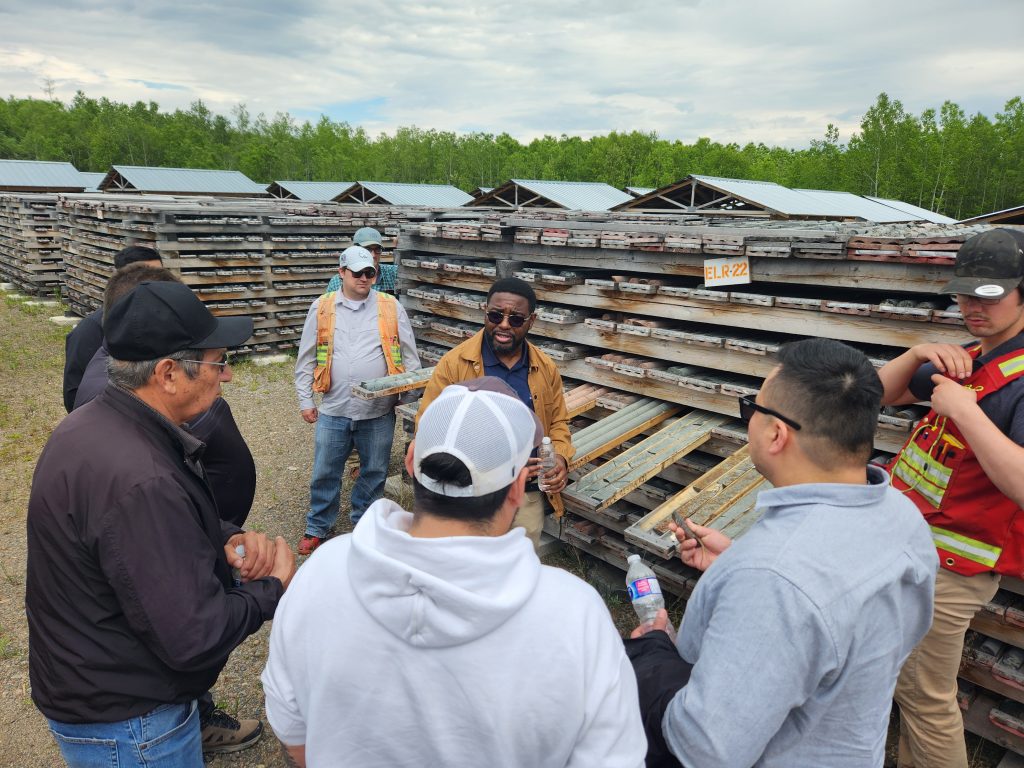Clean Air Metals drills 50.7 metres of 4.52 g/t Pt, 4.38 g/t Pd, 0.99% Cu and 0.53% Ni in near surface drilling, Ontario

Clean Air Metals Inc. [TSXV: AIR; FRA: CKU; OTCQB: CLRMF] reported additional high-grade drilling results from the Current deposit at its 100%-owned Thunder Bay North Critical Minerals Project (TBN).
Assay highlights include: 50.7 m of 4.52 g/t Pt, 4.38 g/t Pd, 0.99% Cu and 0.53% Ni(13.74 g/t Pt.eq; 4.36% Cu.eq) from 82.0 m downhole in Hole CL24-010, including 6.35 g/t Pt, 6.10 g/t Pd, 1.32% Cu and 0.69% Ni over 30.7 m from 102 m; 38.4 m of 3.38 g/t Pt, 3.26 g/t Pd, 0.72% Cu and 0.45% Ni (10.32 g/t Pt.eq; 3.27% Cu.eq) from 153 m downhole in Hole CL24-005, including 13.2 m of 8.39 g/t Pt, 8.09 g/t Pd, 1.75% Cu, 0.95% Ni from 178.2 m. and 20.40 g/t Pt, 21.00 g/t Pd, 4.20% Cu and 2.18 % Ni over 0.5 m from 188.9 m. (Massive Sulphides); 23.3 m of 4.54 g/t Pt, 4.23 g/t Pd, 1.11% Cu and 0.60% Ni (14.20 g/t Pt.eq1; 4.51% Cu.eq2) from 154.7 m downhole in Hole CL24-008, including 13.8 m of 6.01 g/t Pt, 5,56 g/t Pd, 1.45% Cu, 0.75% Ni, from 159.0 m; 19.3 m of 3.61 g/t Pt, 3.26 g/t Pd, 0.79% Cu and 0.38% Ni (10.75 g/t Pt.eq; 3.40% Cu.eq) from 150 m downhole in Hole CL24-006, including 10.8 m of 5.33 g/t Pt, 4.65 g/t Pd, 1.13% Cu, 0.40% Ni from 157.0 m.
Clean Air Metals’ CEO Mike Garbutt commented, “The new drilling results confirm our belief that the tonnage of the highest-grade parts of the Current deposit is likely underestimated by the most recent resource model – largely because of an inadequate drilling density in these areas. Additional geophysical modeling and tightly spaced drilling is expected to allow us to quantify the highest value mineralization within both the Current and Escape deposits. We believe that a more robust, low-tonnage high-grade production model anchored by these high-grade areas is attainable.”
The summer drilling program targeted near-surface high-grade zones within the Current deposit to better define their lateral continuity and tonnage potential. These new results, in conjunction with the initial assays (see September 9 release), confirm that high-grade mineralization in the areas targeted extends beyond what was outlined in the most recent resource model.
The revised geological model for the high-grade areas at Thunder Bay North employs flow processes similar to those associated with alluvial gold processes. These results provide confidence and “proof of concept” that continued success in the expansion of the high-grade pods along strike is possible with tighter drilling. The company believes that a predictive tool based principally upon geophysical data can quickly be developed that will allow the identification of additional high-grade pods that occur within the Current and Escape deposits.
Lionnel Djon, Vice President of Exploration, commented, “The results of the proof-of-concept drilling at Current provide a high level of confidence that the high-grade pods have a regular periodicity that can be predicted using 3D geophysical models and that their tonnage potential is likely greater than previously appreciated. We are excited to follow up on these encouraging results and begin the job of delineating these high-grade domains to support an independent estimation of their tonnage and grade.”
Drilling at four high-grade target areas has produced exceptional results. Nine of the 10 holes completed in the program intersected significant widths of high-grade mineralization, defined here as averaging over 6 g/t combined Pt and Pd.
The company is in the process of developing a follow-up exploration program designed to discover new high-grade zones within the Current and Escape deposits and a resource delineation program to support an independent resource estimate of the highest-grade domains in both deposits.
The project path forward, that includes a smaller tonnage, high-grade and low-capital cost mine plan is buoyed by the results from this program.
The TBN project, accessible by road and next to established infrastructure, hosts two deposits – the Current and Escape deposits, only 2.5 km apart. Together, the deposits host a 13.8 Mt indicated mineral resource containing 2.4M Pt eq. oz with significant potential for expansion down-plunge.
